Consider the cyclic process ABCA on a sample of 2.0mol of an ideal gas as shown in the figure. Temperature of the gas at A and B are 300K and 500K respectively. A total of 1200J heat is withdrawn from the sample in the process. Find the work done by the gas in part BC. take R=8.3JK−1mol−1
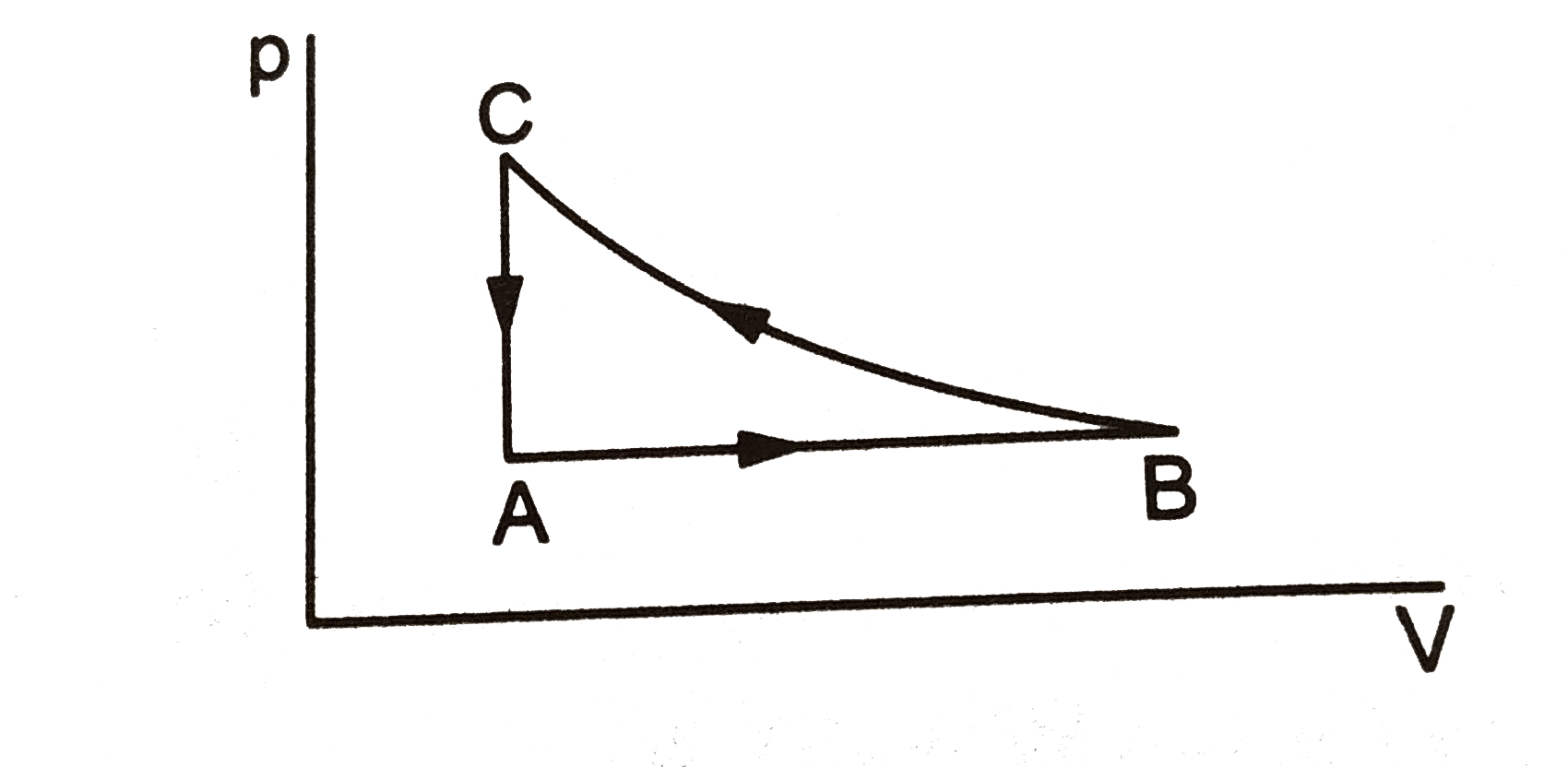
The change in internal energy during the cyclic process is zero. Hence, the heat supplied to the gas is equal to the work done by it Hence,
WAB+WBC+WCA=−1200J
The work done during the process AB is
WAB=PA(VB−BA)
nRT(TB−TA)
=(2.0mol)(8.3J/mol−K)(200K)
=3320J
The work done by the gas during the process CA is zero as the volume remains constant. From (i).
3320J+WBC=−1200J
or WBC=−4520J−−4520
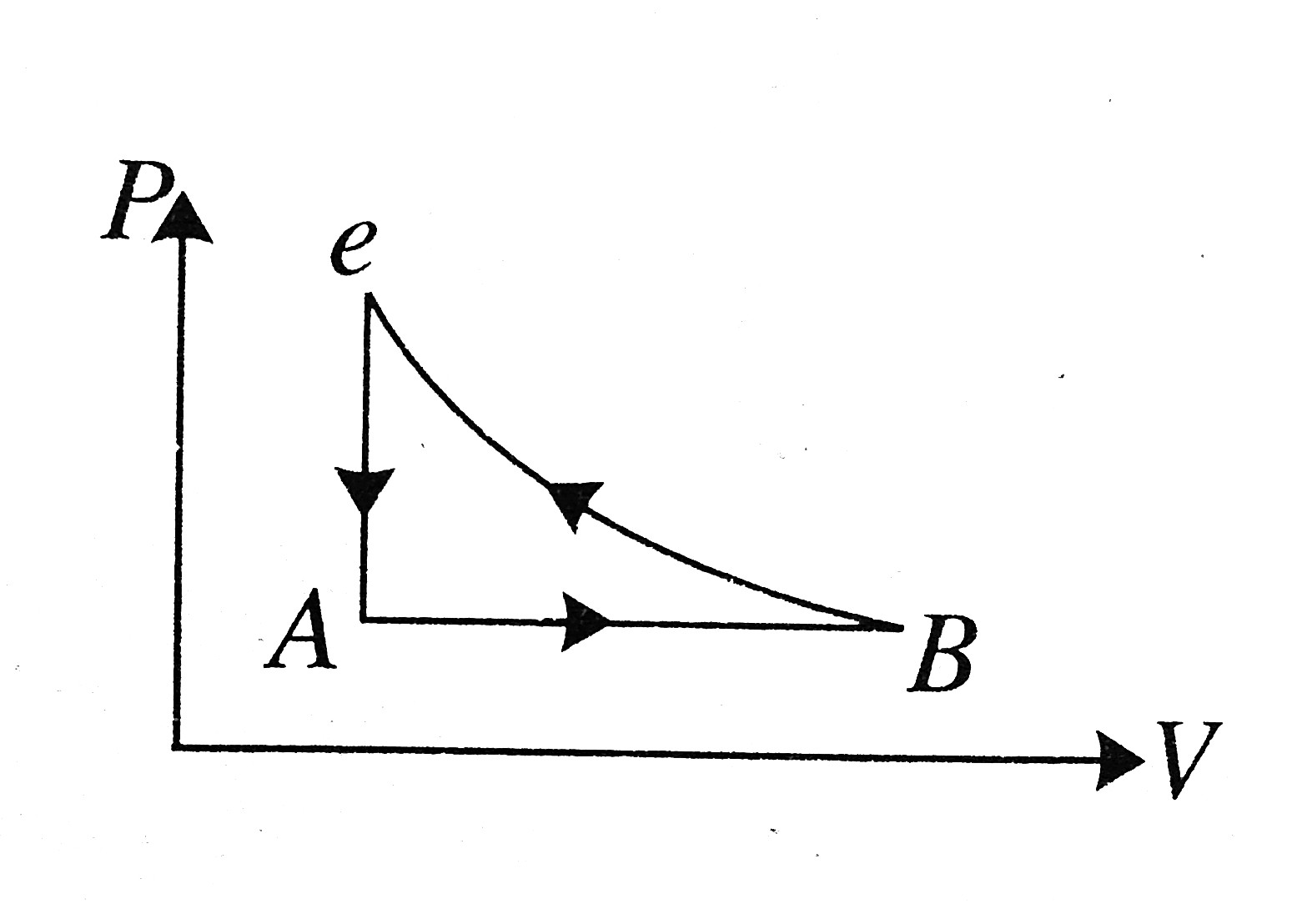
Topper's Solved these Questions
- BOOK - CENGAGE PHYSICSCHAPTER - KINETIC THEORY OF GASES AND FIRST LAW OF THERMODYNAMICSEXERCISE - Solved Examples14videos
KINETIC THEORY OF GASES AND FIRST LAW OF THERMODYNAMICS
- BOOK - CENGAGE PHYSICSCHAPTER - KINETIC THEORY OF GASES AND FIRST LAW OF THERMODYNAMICSEXERCISE - Exercise 2.120videos
KINETIC THEORY OF GASES AND FIRST LAW OF THERMODYNAMICS
- BOOK - CENGAGE PHYSICSCHAPTER - KINETIC THEORY OF GASESEXERCISE - Compression2videos
KINETIC THEORY OF GASES
- BOOK - CENGAGE PHYSICSCHAPTER - LINEAR AND ANGULAR SIMPLE HARMONIC MOTIONEXERCISE - Multiple Correct Answer Type9videos
LINEAR AND ANGULAR SIMPLE HARMONIC MOTION
Similar Questions
consider the cyclic process ABCA on a sample of 2.0 mol of an ideal gas as shown in the temperature of the gas at A and B are 300 K and 500 k respectively. A total of 1200 J heat is withdrawn from the sample in the process. Find the work done by the gas in part BC. take R=8.3JK−1mol−1
 View Solution
View SolutionConsider the cyclic process ABCA, shown in, performed on a sample of 2.0 mol if an ideal gas. A total of 1200 J if heat is withdrawn from the sample in the process. Find the work done by the gas during the part BC.
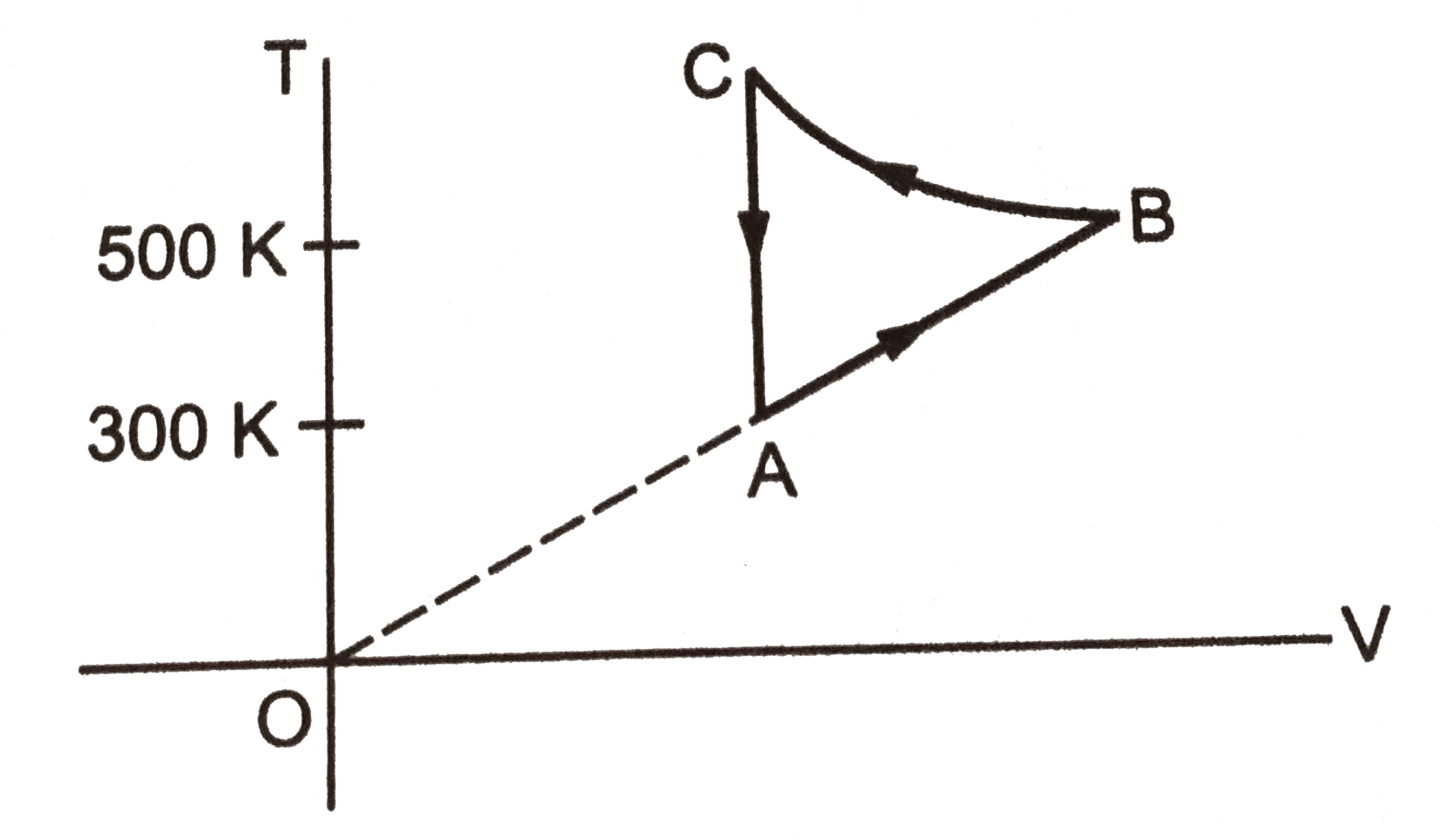 View Solution
View Solution
Knowledge Check
- Question 1 - Select One
A cyclic process performed on one mole of an ideal gas. A total 1000 J of heat is withdrawn from the gas in a complete cycle. Find the work. Done by the gas druing the process B→C.
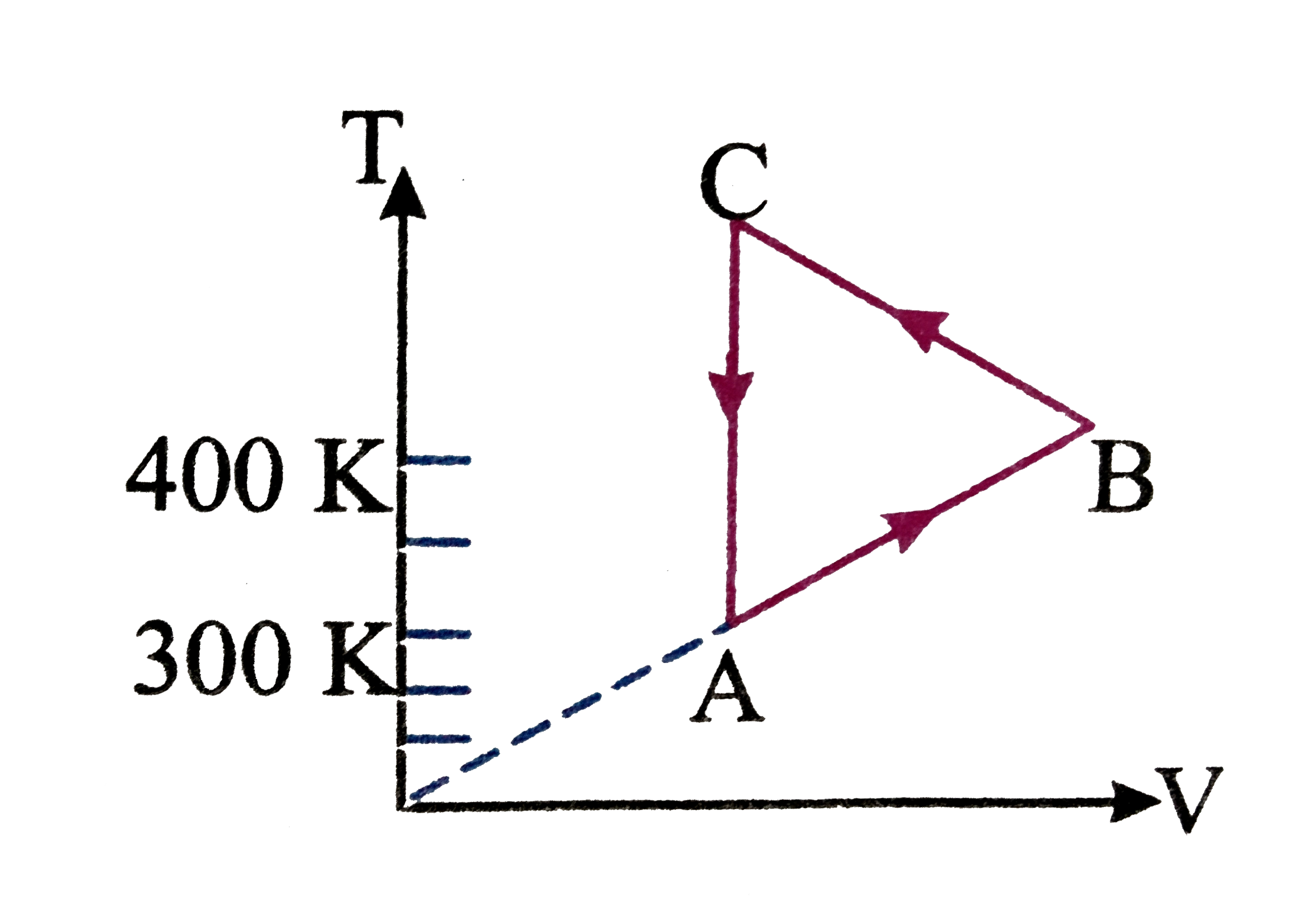 A−1531JB−1631JC−1731JD−1831J
A−1531JB−1631JC−1731JD−1831J - Question 2 - Select One
The cyclic process for 1 mole of an ideal gas is shown in the V-T diagram. The work done in AB, BC and CA respectively is
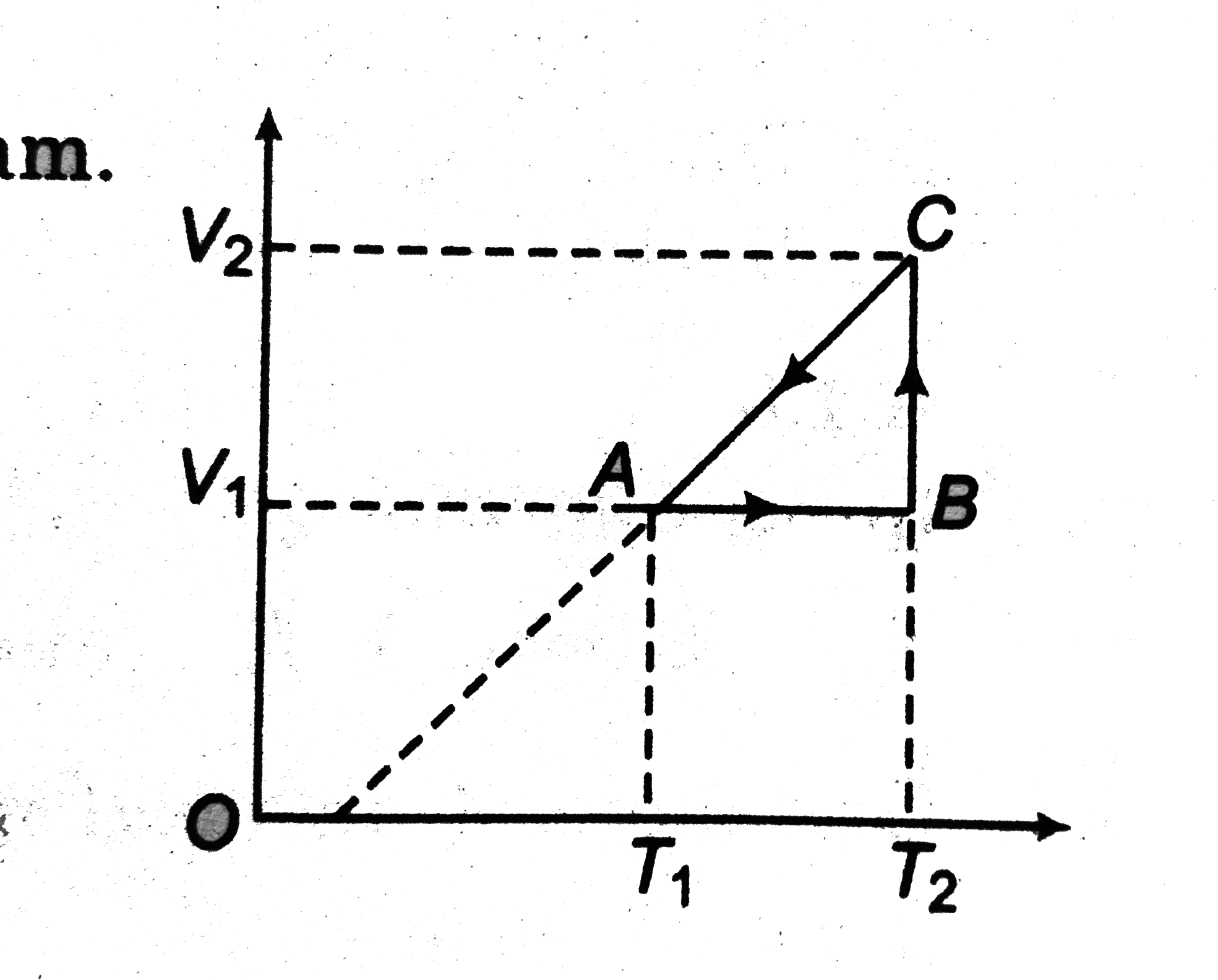 A(a) 0, RT2In∣∣∣V2V1∣∣∣,R(T1−T2)B(b) R(T1−T2),0,RT1In∣∣∣V1V2∣∣∣C(c) 0,RT1In∣∣∣V1V2∣∣∣,R(T1−T2)D(d) 0,RT_(2)In|V_2/V_1|,R(T_2-T_1)
A(a) 0, RT2In∣∣∣V2V1∣∣∣,R(T1−T2)B(b) R(T1−T2),0,RT1In∣∣∣V1V2∣∣∣C(c) 0,RT1In∣∣∣V1V2∣∣∣,R(T1−T2)D(d) 0,RT_(2)In|V_2/V_1|,R(T_2-T_1) - Question 3 - Select One
A cyclic process for 1 mole of an ideal gas is shown in the V-T diagram. The work done in AB, BC and CA respectively are
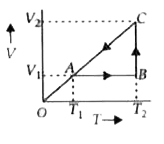 A0,RT1ln(V1V2),R(T1−T2)BR,R(T1−T2),RT1ln(V1V2)C0,RT2ln(V1V2),R(T1−T2)D0,RT2ln(V2V1),R(T1−T2)
A0,RT1ln(V1V2),R(T1−T2)BR,R(T1−T2),RT1ln(V1V2)C0,RT2ln(V1V2),R(T1−T2)D0,RT2ln(V2V1),R(T1−T2)

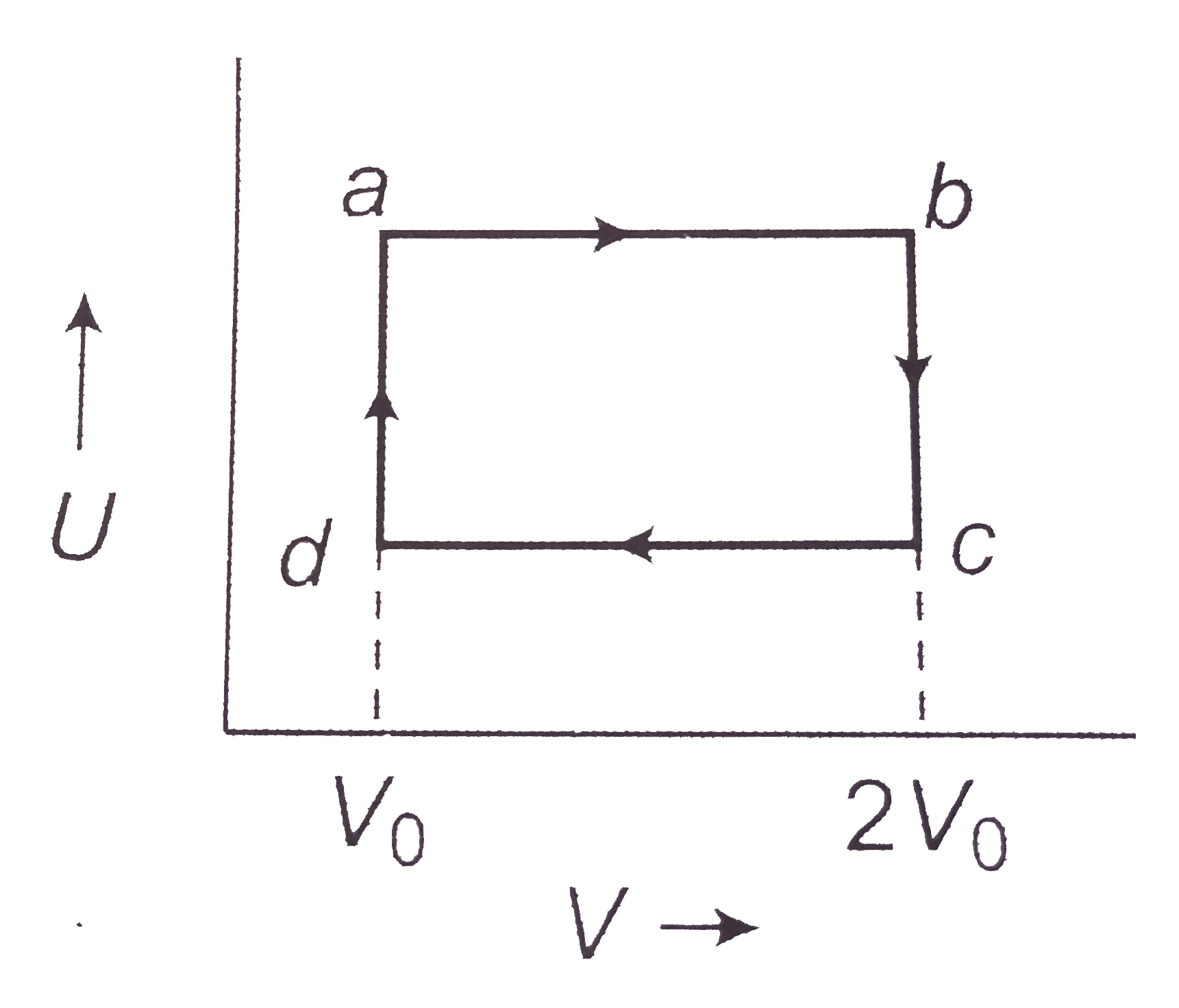 Consider the cyclic process abca performed on a sample of 2.0 mole of an ideal gas. A total of 1000 cal of heat is withdrawn from the sample in the process. Find the work done by the gas during the past bc. View Solution
Consider the cyclic process abca performed on a sample of 2.0 mole of an ideal gas. A total of 1000 cal of heat is withdrawn from the sample in the process. Find the work done by the gas during the past bc. View SolutionIn figure, a sample of 3 moles of an ideal gas is undergoing through a cyclic process ABCA.A total of 1500J of heat is withdraw from the sample in the process. The work done by the gas during the part BC is −PKJ.FINDP.(R=253J/moleK)
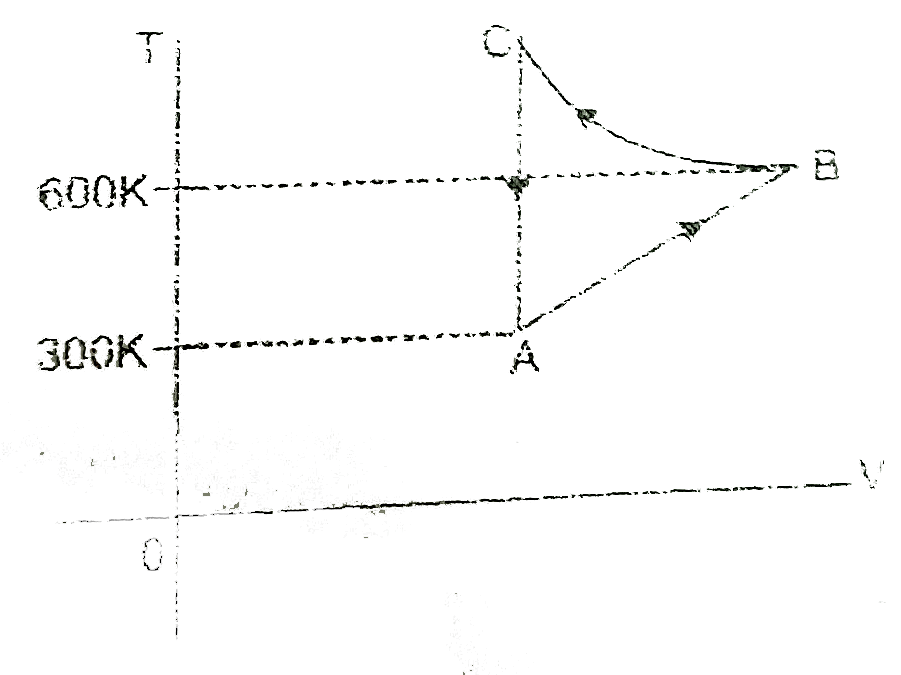 View Solution
View Solutionshows the variation in the internal energy U with the volume V of 2.0 mol of an ideal gas in a cyclic process abcda. The temperatures of the gas at b and c are 500 K and 300 K respectively. Calculate the heat absorbed by the gas during the process.
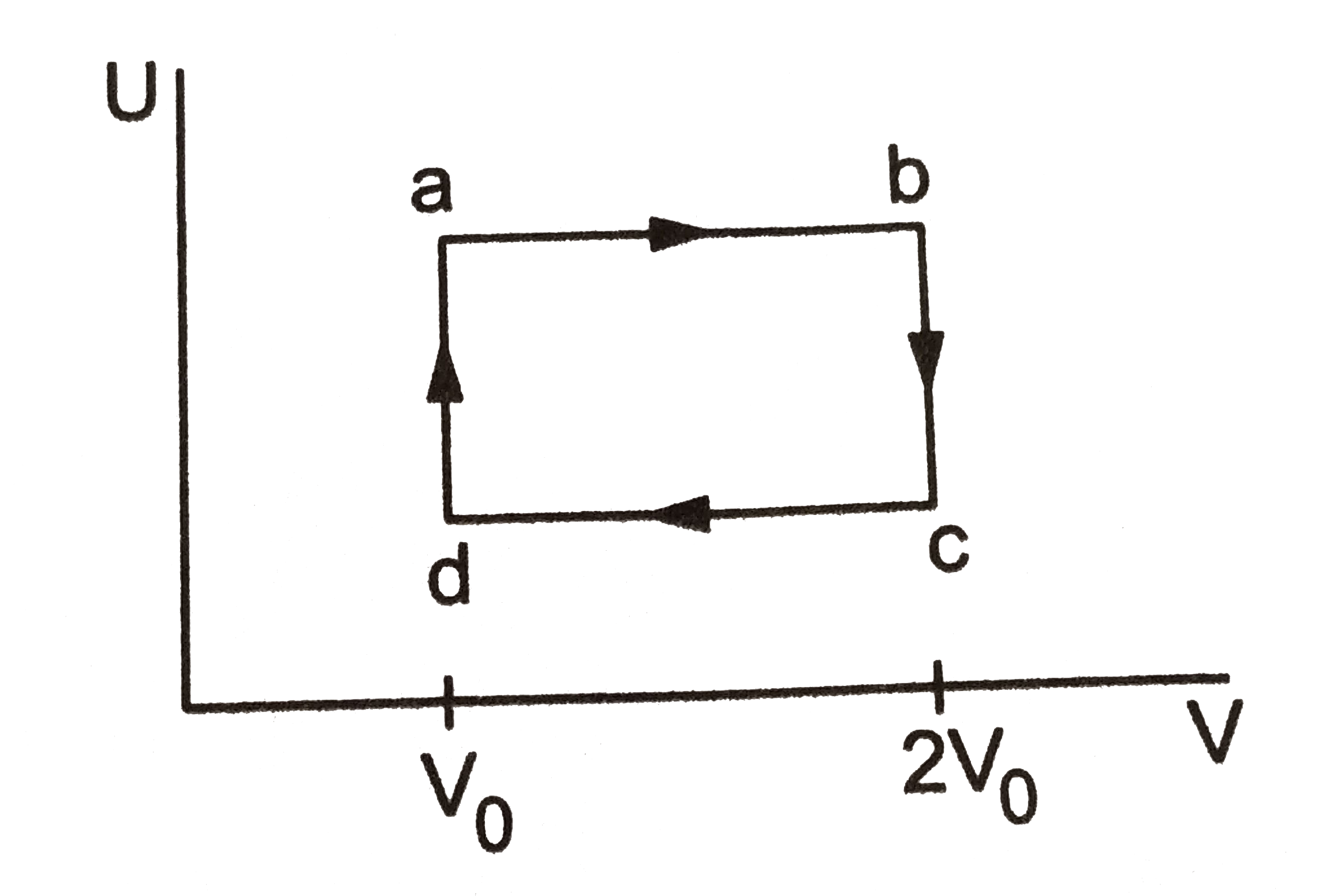 View Solution
View Solution Consider the following cyclic abcda performed on 2 mole of an ideal gas. The temperature of the gas at b and c are 400 k and 300 k respectively. Calculated the heat absorbed by the gas during the process in calories.View Solution
Consider the following cyclic abcda performed on 2 mole of an ideal gas. The temperature of the gas at b and c are 400 k and 300 k respectively. Calculated the heat absorbed by the gas during the process in calories.View SolutionIn figure, a cyclic process ABCA of 3 moles of an ideal gas is given. The temperature of the gas at B and C are 500k and 1000K respectively. If work done on the gas in process CA is 2500J then find the net heat absorbed or released by an idela gas. Take R=25/3J/mol−K.
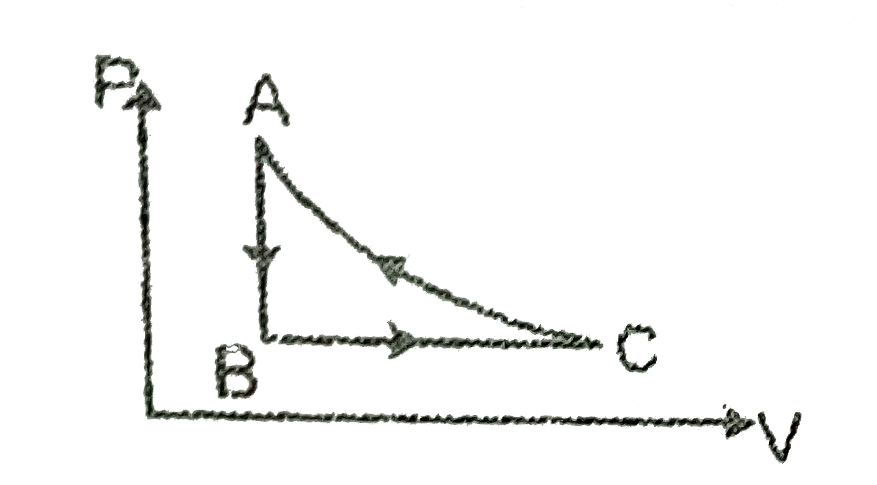 View Solution
View Solution

